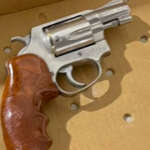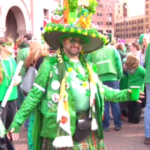When did the St. Patrick’s Day start?
About St. Patrick’s Day Holiday
St. Patrick's Day—celebrated every March 17—has grown from the feast day of a 5th-century missionary into a global festival of Irish culture, music and green-clad revelry. In Ireland the day still carries a blend of religious observance and communal pride, while abroad it has become synonymous with parades, céilís, lively pubs and the playful spectacle of rivers and landmarks briefly turned emerald. For travelers, the holiday offers both authentic cultural moments in Dublin and smaller towns and larger-than-life pageantry in cities like New York, Boston and Chicago.
Approaching St. Patrick's Day as a cultural commentator means looking past the costume and commerce to the traditions that endure: storytelling, Gaelic song, stepdance and the historical threads that bind diaspora communities to the island. As a travel writer, the practical advice is simple—book accommodations and events early, seek out local pub sessions and parish observances for deeper insight, and be curious about how each destination interprets the day. Whether you’re after solemn remembrance or rollicking street parades, St. Patrick’s Day remains a vivid, worldwide celebration of Irish identity and shared conviviality.
St. Patrick’s Day: A Deep Dive into Ireland’s Most Celebrated Holiday
Introduction
St. Patrick’s Day is one of those holidays that sneaks into the global calendar with a wink: parades, green rivers, shamrocks pinned on lapels, and pub doors thrown wide for a communal cheer. But beneath the confetti and joviality lies a rich tapestry of history, faith, migration and cultural reinvention. Whether you’re Irish-born or simply Irish-at-heart for a day, St. Patrick’s Day offers a taste of tradition wrapped in modern spectacle. Ready to take a stroll through its lanes—with a few legends, recipes, and travel tips tossed in?
Key Takeaways
- St. Patrick’s Day commemorates St. Patrick, the patron saint of Ireland, and has evolved from a religious feast day into a global celebration of Irish culture.
- The holiday blends early Christian traditions, pre-Christian Irish customs, and modern civic celebrations like parades and “greening” landmarks.
- Symbols such as the shamrock, green attire, and Celtic imagery carry deep cultural meanings but have also been commercialized.
- From Dublin to New York, St. Patrick’s Day generates significant tourism and economic activity—but it’s also adapting to environmental and social concerns.
- Want to experience it authentically? Look beyond the bars: check parades, cultural programs, traditional music sessions, and local history tours.
History and Origin
The Early Story
St. Patrick’s Day traces back to the early medieval period and honors St. Patrick, a 5th-century missionary credited with spreading Christianity across Ireland. Patrick himself was likely a Romano-British man taken to Ireland as a slave in his youth; after escaping and later returning as a missionary, he became a central figure in Ireland’s conversion to Christianity. The day was originally observed by the Church as a feast day—essentially a moment of religious reflection rather than parades and green beer.
Evolution into a Cultural Holiday
Over the centuries, St. Patrick’s Day transformed from purely religious observance to a cultural and national celebration. In the 17th and 18th centuries, as Irish communities grew abroad—especially in Britain and the United States—Irish expatriates used the day to assert identity and solidarity. Parades began as a way for Irish regiments and communities to gather publicly and proudly. By the 19th century, the holiday had gained civic momentum, culminating in the massive parades and public festivities many of us recognize today.
Historical Context: Brief History and Significance Over the Years
The holiday’s trajectory reflects Ireland’s broader social history: conversion to Christianity, monastic scholarship, colonial struggles, mass emigration, and eventual cultural renaissance. In the 19th century, when millions of Irish fled famine and economic hardship, St. Patrick’s Day became a platform for expressing cultural pride in foreign lands. That diaspora shaped the holiday into a global festival, as emigrants held onto customs and amplified them in new contexts.
In the 20th and 21st centuries, Ireland’s growing international reputation—from literature to music to tech—has fed renewed interest in its cultural holidays. Governments and tourism boards now coordinate major events to showcase Ireland’s culture, while global cities embrace the day through parades, river-dyeing, and monument “greening.” St. Patrick’s Day has thus become an interplay between faith, folklore and global branding.
Significance and Meaning
Cultural Importance
At its heart, St. Patrick’s Day is about identity. For many Irish people and the global Irish diaspora, it’s a day for communal memory—celebrating ancestry, language, music, and resilience. It’s also an occasion when the Irish export soft power: music, dance, cuisine and storytelling—offering a warm, accessible image of the nation.
Religious Meaning
Originally a religious feast in the Catholic calendar, the day still holds spiritual resonance for many. Churches across Ireland and abroad hold special masses and services honoring St. Patrick’s missionary work and the Christianization of Ireland. For believers, the day is a reminder of faith’s historical role in shaping society.
Cultural Significance: Traditions and Symbolism
Symbols tied to St. Patrick’s Day—like the shamrock—carry layers of meaning. The shamrock was reputedly used by St. Patrick to explain the concept of the Holy Trinity. Celtic knots, harp songs, and Gaelic phrases also circulate as symbols of continuity and cultural depth. But symbols can evolve: green, once associated with Irish nationalist sentiment, now doubles as a global marker of the holiday’s playful spirit.
Symbols and Decorations
When you walk into a St. Patrick’s Day parade or pub, visual cues are everywhere: green banners, shamrocks, leprechaun imagery, and Celtic knots. These symbols serve as both cultural shorthand and marketing tools. The color green—linked to Ireland’s verdant landscapes and the 19th-century Young Ireland movement—dominates the palette, though orange and white (from the Irish flag) also have their place in political contexts.
The shamrock is the holiday’s mascot. Small, trifoliate and unassuming, it became a memorable teaching prop in Christian storytelling and now functions as a universal emblem of “Irishness.” Then there’s the harp, an ancient symbol featuring on Irish coins and official seals, reminding us of Ireland’s deep musical heritage.
Decorations evolve with trends: from paper bunting and hand-painted signs to LED-lit plastic shamrocks. Cities “green” landmarks—like Chicago dyeing its river—creating Instagram-friendly spectacles that blend tradition with modern showmanship.
Want specifics? Here are visual symbols you’ll encounter:
- Shamrock (three-leaf clover): historic and religious symbolism.
- Green attire and face paint: demonstrates participation and cheer.
- Leprechauns and pots of gold: folkloric, playful symbols of luck.
- Celtic knots and harps: nods to Ireland’s artistic and musical past.
Traditions and Celebrations
St. Patrick’s Day customs range from quiet church services to uproarious parades. If you’re in Ireland, the day can be intimate—family gatherings and church masses—or civic, with local parades and concerts. Abroad, communities often stage large parades, cultural festivals, and concerts showcasing Irish dance and folk music.
Parades are the quintessential modern expression: marching bands, cultural floats, civic leaders, and thousands of onlookers. The New York City parade, one of the world’s largest, dates back to the 18th century and remains a massive draw for locals and tourists alike. Meanwhile, cities from Sydney to Tokyo stage their own parades or modify the day into cultural displays suited to local tastes.
Another big tradition is “greening” landmarks. Major logos, statues, and waterways are lit or dyed green to mark the day. It’s a tourist magnet and a clever PR move, turning a national feast into a global spectacle. Meanwhile, live music—traditionally in pubs or public squares—reminds us that St. Patrick’s Day is also a living cultural festival, not just a one-day branding exercise.
Finally, community and charity events are common. Many parades and gatherings are coupled with fundraising drives, connecting cultural celebration with civic responsibility. In many places, St. Patrick’s Day has evolved into a day of community building, where the public and private sectors partner to stage an accessible cultural event.
Food and Cuisine
Food on St. Patrick’s Day blends comfort and history. In Ireland, traditional meals such as Irish stew (lamb or mutton with vegetables) and colcannon (mashed potatoes with kale or cabbage) highlight rural, hearty fare. Corned beef and cabbage became associated with the day largely due to Irish immigrants in America who substituted corned beef for traditional pork because it was more affordable and available at the time.
Of course, no St. Patrick’s Day food roundup is complete without mentioning beer. Pubs fill up for pints of stout—often Guinness—with seasonal promotions, and “green beer” becomes a novelty in many US bars. But beyond novelty drinks, modern menus also feature Irish smoked salmon, soda bread, and artisanal takes on traditional recipes, reflecting a culinary culture that respects its roots while inviting innovation.
Attire and Costumes
What do people wear on St. Patrick’s Day? The short answer: green, lots of it. But there’s more nuance than just a single color. Wearing green is an easy way to show participation—some say it dates to the belief that green makes you invisible to leprechauns, who’d pinch anyone they could see. Whether you believe that or not, the pinching tradition is still a playful if old-fashioned ritual among children and partygoers.
Traditional Irish attire—when showcased—is more subtle: Aran sweaters, tweed caps, and linen shirts nod to rural Irish dress. In parades and festivals you’ll also spot Gaelic athletic jerseys, sashes, and ceremonial robes. For performers, costumes include ornate step-dancing dresses adorned with Celtic embroidery.
Costume culture extends into the whimsical: leprechaun hats, oversized shamrock sunglasses, green wigs and temporary tattoos. For travelers, balancing respect and fun is easy: choose green accessories, attend a mass or cultural event during the day, and save wild costume antics for private parties.
Want a simple packing list for experiencing the day authentically? Consider:
- A green sweater or scarf.
- Comfortable shoes for parades and cobblestone streets.
- A waterproof jacket—March weather is notoriously changeable.
- A small flag or pin if you’re joining a parade or cultural event.
Geographical Spread
It’s unsurprising that St. Patrick’s Day spreads far beyond Ireland. The holiday’s reach follows Irish migration patterns—into the United States, Britain, Canada, Australia and beyond. Major cities with historical Irish immigrant populations tend to have the most elaborate celebrations: New York, Boston, Chicago, and Dublin lead the pack.
In the United States, St. Patrick’s Day became a way for Irish Americans to assert identity and gain political clout. The holiday is deeply woven into urban cultural calendars, with parades, political speeches historically tied to Irish-American organizations, and bar-centered festivities. Chicago’s dyeing of the river and New York’s parade are two vivid examples of how immigrants shaped public celebration.
Across the English-speaking world, St. Patrick’s Day adapts to local customs. In Australia, parades and festivals often reflect summer conditions and blend Irish culture with wider multicultural programming. In Asia, cities like Tokyo and Seoul embrace themed parades and Irish pubs, often as part of a larger international festival calendar.
Recently, the holiday has gained traction in places you might not expect: Dubai lights up landmarks in green, and numerous European capitals include “greening” in their event calendars. The common thread? St. Patrick’s Day offers an accessible cultural hook—music, dance, food and spectacle—that cities can use to attract tourists and enliven public life.
Below is a quick look at how different cities mark the day:
| City | Most Recognizable Tradition |
|---|---|
| Dublin, Ireland | Large-scale parades, cultural programs, and national celebrations |
| New York City, USA | Historic parade with thousands of participants and spectators |
| Chicago, USA | Dyeing the Chicago River green |
| Sydney, Australia | Parades and waterfront events blending Irish and local culture |
| Tokyo, Japan | Parades and themed events in Sakuragicho and Roppongi |
Modern-Day Observations
How has St. Patrick’s Day changed recently? For one, it’s become more family-friendly in many places. Cities and organizations increasingly program daytime cultural events—storytelling sessions, traditional music concerts, and family parades—so the celebration isn’t only about nightlife.
Digital media has also transformed how the holiday spreads. Hashtags, livestreamed parades, and viral videos of “greened” landmarks amplify the day’s reach. This reach means more people learn about Irish music, dance and history, but it also commercializes the holiday in ways purists might frown upon.
Public institutions now play a bigger role. Tourism boards and cultural ministries coordinate official events to ensure accurate representation of Irish heritage, while local governments manage logistics—safety, traffic, and environmental concerns—so celebrations can scale up without collapsing under their own popularity.
Interesting Facts or Trivia
Here are a few things you might not have known about St. Patrick’s Day:
- St. Patrick probably didn’t wear green. Early images show him in bishop’s robes, often depicted in blue in medieval manuscripts. Green became associated with Ireland and nationalism later.
- The world’s oldest known St. Patrick’s Day parade wasn’t in Ireland—it was in the United States. Records indicate a parade in St. Augustine, Florida, in 1601, though New York’s 1762 parade is the oldest continuously celebrated parade in the U.S.
- Chicago dyes its river green using a secret formula that contains vegetable-based dye; it’s environmentally monitored to ensure safety.
- “Corned beef and cabbage” is more an Irish-American tradition than a staple dish in Ireland itself, where bacon and cabbage or lamb stews have deeper roots.
Curious about parade sizes, beer consumption, or economic figures tied to the day? These numbers vary widely by city and year, but the holiday’s visibility in media and the number of international “greened” landmarks make it one of the world’s most recognized cultural celebrations.
Legends and Myths
St. Patrick’s Day is wrapped in stories that blur faith and folklore. One popular legend credits St. Patrick with driving snakes out of Ireland. Biologically speaking, post-glacial Ireland likely lacked snakes anyway; the tale is symbolic, representing the triumph of Christianity over pagan practices.
Then there are leprechauns—mischievous shoemakers of Irish folklore who hide pots of gold at the end of rainbows. Leprechauns aren’t directly related to St. Patrick, but their image has been folded into modern celebrations as a playful symbol of luck and Irish myth. They’re more fairy tale than saintly legend, but they add color to the festivities.
Other tales connect St. Patrick with miracles, such as using a shamrock to explain the Trinity or performing healings during his missionary work. These stories blend historical memory with moral teaching, creating a tapestry of narrative that has helped sustain his cultural stature for over a millennium.
Social and Economic Impact
St. Patrick’s Day is big business—especially for hospitality, tourism, and retail. Pubs and restaurants see one of the highest single-day turnovers of the year in countries with large celebrations. Hotels, transport providers, and event companies also benefit as visitors travel to participate in parades and festivals.
Local economies often get a measurable boost. For cities that host large parades or “greening” spectacles, the holiday is part publicity stunt, part tourist draw. Event organizers and city councils aim to strike a balance: maximize visitor numbers while ensuring public safety and cultural authenticity.
But there are trade-offs. The economic upswing can bring crowding, noise, and occasional disorder. Public services—police, sanitation, transport—must scale likewise, which raises operational costs. Many cities mitigate this by partnering with sponsors, implementing ticketed events, or encouraging daytime family programming to spread the burden.
Still, the long-term brand value is significant. Countries and cities that stage memorable, well-run celebrations often find the holiday boosts their cultural profile and tourism outside of March too, as visitors return for music festivals, heritage trails and literary tours.
Environmental Aspect
Large public events have environmental footprints: waste generation, energy use, and emissions from travel can add up. In response, organizers increasingly adopt greener practices. Examples include switching to biodegradable materials for decorations, incentivizing public transport, and implementing recycling stations at event sites.
Some cities also use eco-conscious dye for river greening and monitor water quality to prevent harm. Whether you’re attending a parade or organizing one, small choices—using reusable cups, carrying a trash bag, or taking public transport—help keep the celebration sustainable.
Global Relevance
Why does St. Patrick’s Day matter to people outside of Ireland? Because it’s a safe cultural gateway: easy to participate in, deeply musical and culinary, and rich with visual spectacle. It’s a day that promotes curiosity about Irish culture—someone who enjoys a parade may later seek out Irish music, literature, or travel opportunities.
Moreover, the holiday models how diasporic traditions can become globally shared culture. It shows how migration reshapes holidays into new forms, combining original meanings with contemporary civic and commercial practices. In a world hungry for shared rituals, St. Patrick’s Day offers a template for cultural diffusion and reinvention.
Other Popular Holiday Info
Thinking of traveling for St. Patrick’s Day? Book early. Flight and hotel demand spikes in major cities like Dublin, New York and Boston. Dress for the weather—March in Ireland is often brisk and damp. Look beyond pubs: cultural centers, museums and local community events often host concerts, workshops, and storytelling sessions that give a deeper sense of Irish cultural life.
Want to celebrate from home? Try cooking a traditional dish, learning a simple Gaelic phrase, or streaming a live parade. Many cultural organizations livestream events and offer virtual sessions on Irish music and dance. And if you plan to participate in parades or large events, check official city or event websites for scheduling, safety rules, and any ticketing details.
Helpful resources:
- Official tourism information: Ireland.com
- Historical overview: Britannica on St. Patrick
- Cultural context and artifacts: Smithsonian Magazine (search “St. Patrick’s Day”)
Conclusion
St. Patrick’s Day is part sermon, part street party, and entirely a global cultural phenomenon. It tells a story of faith and folklore, migration and reinvention, and—most importantly—of people marking their roots with joy. Whether you’re drawn to the music, the food, the history, or simply the chance to wear green, there’s an invitation here: learn, celebrate, and be curious.
If you’re inspired, plan a trip to Dublin’s official festival, join a parade in your city, or attend a cultural event that focuses on music and storytelling rather than just a bar crawl. Take a moment to read about the history, taste an authentic dish, and support local performers. St. Patrick’s Day is more than a single day; it’s a doorway to culture. Step through it.
Want local tips for attending St. Patrick’s Day events in a specific city? Tell me where you’re headed and I’ll share a tailored plan—parade times, cultural hotspots, and practical advice to make the most of the celebration.
How to Say "St. Patrick’s Day" In Different Languages?
- Arabic
- عيد القديس باتريك (ar-EG)
- Bengali
- সেন্ট প্যাট্রিক দিবস (bn-BD)
- Chinese (Simplified)
- 圣帕特里克节 (zh-CN)
- French
- Fête de la Saint-Patrick (fr-FR)
- German
- Tag des Heiligen Patrick (de-DE)
- Hebrew
- יום פטריק הקדוש (he-IL)
- Hindi
- सेंट पैट्रिक दिवस (hi-IN)
- Italian
- Festa di San Patrizio (it-IT)
- Japanese
- 聖パトリックの祝日 (ja-JP)
- Korean
- 성 패트릭의 날 (ko-KR)
- Portuguese
- Dia de São Patrício (pt-BR)
- Russian
- День Святого Патрика (ru-RU)
- Spanish
- Día de San Patricio (es-ES)
- Swahili
- Siku ya Mtakatifu Patrick (sw-TZ)
- Turkish
- Aziz Patrick Günü (tr-TR)
St. Patrick’s Day Also Called
St. Paddy's DayCountries where "St. Patrick’s Day" is celebrated:
FUN FACT:
In year 461 AD, St. Patrick’s Day is celebrated on March 17 for the first time.HOLIDAY CHECK: We strive for accuracy and fairness. But if you see something that doesn't look right, please click here to contact us!
Travel Recipes, Food and Cuisine
St. Patrick's Day: Food, Cuisine, and Recipes
St. Patrick's Day has grown from a liturgical feast into a global celebration of Irish culture — and nowhere is that spirit more deliciously evident than at the table. From humble soda bread and colcannon to the now-iconic corned beef and cabbage, the holiday's cuisine tells a story of migration, adaptation, and conviviality. This guide explores signature dishes, regional variations, classic recipes, modern riffs, pairings, presentation ideas, and nutritional alternatives so you can celebrate with authenticity and creativity.
Signature Dishes
What people commonly associate with St. Patrick's Day differs greatly depending on whether you ask someone in Ireland or an Irish-American in Boston or New York. Here are the dishes that most frequently anchor a St. Patrick's menu and the cultural context behind them.
- Corned Beef and Cabbage — Popular in Irish-American communities. Although corned beef was not historically a staple in Ireland (where salted bacon and mutton were more common), Irish immigrants in the U.S. adopted corned beef from Jewish butchers in urban centers, and it became a St. Patrick’s Day mainstay. See a cultural account at the Smithsonian for deeper historic context: Smithsonian Magazine.
- Irish Stew — A simple, slow-cooked dish traditionally made with lamb or mutton, root vegetables, and a rich broth; a rural classic throughout Ireland.
- Irish Soda Bread — A quick bread leavened with baking soda and buttermilk, with savory or sweet variations; iconic for its cross-slit top and rustic crumb. Practical recipes and variations are well documented at BBC Good Food.
- Colcannon and Champ — Creamy mashed potatoes mixed with cabbage, kale (colcannon) or scallions (champ), symbolizing the potato’s central role in Irish foodways.
- Boxty — A potato pancake or griddle cake, regional to the west of Ireland, showcasing the versatility of spuds.
- Guinness and Irish Whiskey — Stouts and whiskey define celebratory drinks; Guinness often accompanies meals or serves as an ingredient in stews and desserts.
Regional Variations
Ireland
- In Ireland, St. Patrick’s Day menus are more likely to emphasise traditional Irish stew, fresh seafood on the coasts, barmbrack (a fruit bread) in the autumn ritual, and hearty, regional breads and cheeses.
- Western counties—Galway and Mayo—favor boxty and seafood-based dishes, while Ulster may show heavier use of root vegetables and pork.
United States
- Northeast (NY, Boston, Chicago): Corned beef and cabbage, Reuben sandwiches (corned beef, sauerkraut, Swiss cheese), and Irish pubs serving stout and whiskey cocktails dominate.
- Midwest and South: Adaptations include smoked or roasted corned beef, potluck versions of colcannon, and fusion dishes incorporating local BBQ styles.
- West Coast: Chefs experiment with local produce—Guinness-braised short ribs, seafood chowders spiked with Irish whiskey, or vegan reinterpretations using lentils and root vegetables.
Recipes
Below are carefully curated, classic recipes with step-by-step instructions, plus modern twists you can try at home.
Classic Recipe: Slow-Cooker Corned Beef and Cabbage
- Serves: 6
- Prep time: 20 minutes
- Cook time: 8 hours (low)
- Ingredients:
- 3–4 lb corned beef brisket (with spice packet)
- 1 large onion, quartered
- 3 cloves garlic, smashed
- 6 medium carrots, peeled and halved
- 6 small potatoes or 4 large, quartered
- 1 small head green cabbage, cut into wedges
- 2 cups beef or light stock (or water)
- Pepper to taste
- Rinse the corned beef briefly under cold water to remove excess brine; pat dry. If your brisket came with a spice packet, set aside.
- Place onion, garlic, carrots, and potatoes in the bottom of the slow cooker. Lay the corned beef on top, fat-side up. Sprinkle the spice packet over the meat and add pepper.
- Pour stock or water around (not over) the meat to avoid washing off spices. Cover and cook on low for 8–9 hours (or high for 4–5 hours).
- About 1 hour before serving, add cabbage wedges on top so they steam but don’t overcook.
- Transfer meat to a cutting board, let rest 10 minutes, slice across the grain. Serve with vegetables and a ladle of cooking liquid.
Tip: For a deeper flavor, sear the brisket in a hot pan before slow cooking. Reserve some cooking liquid as jus or to make a mustard sauce.
Classic Recipe: Irish Soda Bread
- Serves: 8
- Prep time: 10 minutes
- Cook time: 35–45 minutes
- Ingredients:
- 4 cups (480 g) all-purpose flour
- 1 tsp baking soda
- 1 tsp fine salt
- 1 3/4 cups (420 ml) buttermilk
- 1 tbsp brown sugar (optional)
- Preheat oven to 425°F (220°C). Lightly grease a baking sheet.
- Whisk flour, baking soda, sugar (if using), and salt in a large bowl.
- Make a well and pour in the buttermilk. Stir until a soft dough forms; do not overmix.
- Turn dough onto a floured surface, shape into a round loaf, and transfer to the baking sheet. Cut a deep cross on top (traditional).
- Bake 35–45 minutes until golden and a skewer comes out clean; bottom should sound hollow when tapped.
Tip: For a sweet version (barmbrack-style), add 1 cup mixed dried fruit that has been soaked in tea.
Classic Recipe: Colcannon (Creamy Potato and Kale Mash)
- Serves: 4
- Ingredients:
- 2 lb (900 g) potatoes, peeled and cubed
- 4 tbsp butter (or olive oil)
- 1 large bunch kale or cabbage, shredded (about 4 cups)
- 1/2 cup milk or cream (or plant-based milk)
- Salt and pepper to taste
- Boil potatoes in salted water until tender, 12–15 minutes. Drain and return to pot to dry briefly.
- While potatoes cook, sauté kale or cabbage in 2 tbsp butter until wilted and bright.
- Mash potatoes with remaining butter and milk until smooth. Fold in the greens, season to taste.
- Serve hot with an extra knob of butter on top.
Modern Twists on Traditional Flavors
- Vegan Guinness Shepherd’s Pie: Use brown lentils or textured vegetable protein braised in Guinness and tomato paste, topped with mashed sweet potatoes or cauliflower-parsnip mash.
- Corned Beef Reuben Egg Rolls: Shred leftover corned beef with sauerkraut and Swiss cheese, roll in egg roll wrappers and fry or bake until crisp; serve with mustard-dill dipping sauce.
- Guinness-Braised Short Ribs: Replace brisket with beef short ribs braised in stout, carrots, and thyme for a rich, modern main that nods to Irish stout traditions.
- Green Matcha Soda Bread: For a playful spin, add matcha or spinach purée to the dough for an emerald-hued loaf without artificial dyes.
Preparation and Cooking Tips
- For authentic flavor, don’t rush low-and-slow cook methods — stews and braises deepen when cooked gently.
- Reserve the corned beef cooking liquid (brine) to thin gravies or make a seasoned broth for colcannon.
- Use a thermometer: corned beef is tender around 190–200°F (88–93°C) internal after slow cooking.
- To prevent soggy cabbage, add it late in the cooking process so it steams rather than stews.
Pairings and Presentations
Complementary Pairings
- Drinks: Guinness or other stouts, Irish whiskey (neat or cocktails like Irish coffee), and for lighter pairings—dry cider or a crisp lager.
- Sides: Soda bread or brown bread, pickled vegetables, mustard or horseradish sauce with corned beef, and buttered root vegetables.
- Desserts: Guinness chocolate cake, barmbrack slices with clotted cream, or a lemon tart to cut through richer mains.
Decorative and Festive Presentation
- Plate colcannon in a shallow bowl with a well in the center for melted butter; sprinkle chopped chives.
- Use cabbage leaves as rustic platters for finger foods like boxty or corned beef sliders.
- Green accents: fresh parsley, scallions, or microgreens — avoid artificial dyes if possible; natural green color from herbs looks fresher and more appetizing.
- Serve soda bread on a wooden board with wrapped butter pats and small ramekins of jam or honey.
Nutritional and Dietary Considerations
Traditional Irish dishes are often hearty and calorically dense, but they adapt well to health-conscious diets with a few smart swaps.
| Traditional Ingredient | Alternative (Dietary Need) |
|---|---|
| Corned beef (high sodium) | Low-sodium corned beef or slow-roasted lean brisket with homemade low-salt brine |
| All-purpose flour (soda bread) | Gluten-free flour blend (1:1) and xanthan gum if needed |
| Dairy butter and cream | Olive oil, vegan butter, or plant-based milk (oat or almond) |
| Beef or lamb in stews | Brown lentils, mushrooms, or jackfruit for vegetarian/vegan versions |
Healthier Options
- Trim visible fat from cuts of meat and opt for leaner brisket. Rinse commercial corned beef to reduce surface salt, and use a low-sodium brine if making your own.
- Increase vegetable ratios: bulk out dishes with root vegetables, pulses, and greens for fiber and micronutrients.
- Choose whole-grain or gluten-free flours for breads and add seeds for texture and nutrition.
Ingredient Substitutions (Allergens and Preferences)
- Gluten-free: Use a 1:1 gluten-free flour and check yeast/baking soda for cross-contamination.
- Dairy-free: Replace butter with extra-virgin olive oil or vegan butter; use plant-based milks in soda bread and colcannon.
- Vegetarian/Vegan: Swap meat with smoked tempeh, seitan (if gluten-tolerant), mushrooms, or lentils braised in stout and vegetable stock.
- Low-sodium: Make your own brine with reduced salt and plenty of aromatics; use herbs and acid (vinegar, lemon) to enhance flavor without extra salt.
Further Reading and Authoritative Resources
- Historical overview of corned beef and St. Patrick’s Day traditions: Smithsonian Magazine
- Traditional and modern recipes, technique notes: BBC Good Food
- Contemporary Irish food writing and regional recipes: The Irish Times – Food
- Nutrition guidance for balanced choices: NHS Eat Well
Final Notes
St. Patrick’s Day food is as much about story and community as it is about flavor. Whether you choose to honor tradition with a slow-cooked corned beef and cabbage, experiment with a vegan Guinness shepherd’s pie, or bake a warm loaf of soda bread, the best holiday meals are shared—and thoughtfully prepared. Use the recipes and tips above to build a menu that respects tradition, suits your table, and adds a modern flourish where you like.
Songs and Music
The Musical Tapestry of St. Patrick’s Day: A Definitive Guide
St. Patrick’s Day is as much a sonic celebration as it is a visual one. From lilting airs played on the uilleann pipes to boisterous Celtic punk anthems, the music of March 17 binds history, identity, and revelry into a single, irresistible rhythm. This guide explores the sounds that define the holiday — traditional tunes, modern reinterpretations, and curated playlists that suit every mood. Whether you’re planning a parade soundtrack, a pub night, or a family singalong, this article is your roadmap to the music of St. Patrick’s Day.
The Definitive Holiday Music Guide
St. Patrick’s Day music spans centuries: sacred airs and laments, dance tunes for reels and jigs, rebel songs shaped by emigration, and contemporary genres that channel Irish identity into punk, rock, and pop. Here’s how to approach the sonic landscape.
What defines “St. Patrick’s Day music”?
- Traditional Irish music: reels, jigs, airs, hornpipes and ballads performed on fiddle, tin whistle, flute, bodhrán, and uilleann pipes.
- Folk and ballad traditions: narrative songs documenting history, love, loss, and migration.
- Celtic rock and punk: high-energy modern reworkings of folk motifs (examples include Dropkick Murphys, Flogging Molly).
- Parade and brass band arrangements: orchestral or marching arrangements adapted for civic celebrations.
For authoritative background on Irish music traditions, see resources from the Smithsonian Folkways and the National Museum of Ireland (museum.ie), both of which document the social and historical context of traditional Irish music.
Timeless Holiday Melodies
These are the songs you’ll hear everywhere on St. Patrick’s Day. Below each entry we've embedded a YouTube video so you can listen as you read.
“Danny Boy” (air)
Often associated with longing and emigration, “Danny Boy” is an emotive air that has become synonymous with Irish diaspora sentiment.
“Molly Malone” (ballad)
The street-seller of Dublin, also known as “Cockles and Mussels,” is sung as both an ode to the city and a tourist anthem.
“The Wild Rover” (pub classic)
A singalong favorite, especially in pubs — its chorus invites crowd participation and communal cheer.
The Essential Holiday Music Collection
Below is a curated mix of iconic anthems and modern classics that capture the holiday’s evolving soundscape.
Iconic Holiday Anthems
| Artist | Song |
|---|---|
| The Dubliners | Molly Malone |
| Celtic Woman | Danny Boy |
| The Pogues & The Dubliners | The Irish Rover |
| The Clancy Brothers | Whiskey in the Jar (folk rendition) |
Modern Holiday Classics
Irish music branched outward in the late 20th and early 21st centuries, spawning bands that married folk roots with rock and punk energy.
| Artist | Song | Year |
|---|---|---|
| Dropkick Murphys | I’m Shipping Up to Boston | 2005 |
| Flogging Molly | Drunken Lullabies | 2002 |
| The Pogues | Streams of Whiskey | 1985 |
Modern Holiday Hits (embedded)
Contemporary songs often give the holiday a new edge — louder, faster, and ideal for energetic parades and pub playlists.
Holiday Playlists for Every Mood
- Traditional & reflective: slow airs, ballads, and piano/ fiddle arrangements.
- Pub & singalong: rollicking reels, “Wild Rover,” and session staples.
- Upbeat & modern: Celtic punk and rock for parades and street parties.
- Family-friendly: singable tunes like “Molly Malone” and instrumental medleys.
Soundtracks That Defined Generations
Films and TV have helped popularize Irish songs globally — from cinematic uses of “Danny Boy” to punk tracks in sports and action movie soundtracks. If you’re building a themed soundtrack, balance authenticity (traditional sets) with accessibility (recognizable modern songs).
Songs of Celebration: For Kids and Adults
- Kids: simplified instrumentals or acoustic covers of “Molly Malone” and easy jigs.
- Adults: deeper cuts—rebel ballads and contemporary protest songs that reflect socio-historical themes.
The Ballads of Holiday
Ballads carry memory. Songs like “The Parting Glass” and “Grace” are elegiac and often performed at gatherings to mark both joy and loss.
Musical Notes: The Melody Behind the Holiday
Understanding the musicology helps listeners appreciate why these songs affect us. Traditional Irish music frequently uses modal scales (Dorian, Mixolydian), ornamentation (cuts, rolls, crans), and set dance rhythms.
Example: simplified melody fragment (Dorian feel) for a jig-like air (in ABC-style shorthand) X:1 T:Sample Jig Fragment M:6/8 L:1/8 K:Ddor D2F AFD | E2G B2A | F2A d2c | B3- B2A ||
These shorthand lines hint at phrasing and ornamentation — actual performance adds grace notes and rolls that create the recognizable “Irish” sound.
The Essential Holiday Music Collection (Expanded)
This section reiterates core collections with deeper interpretive notes and lyric commentary.
Anthems of the Holiday: A Lyrical Journey
Below are brief excerpts and interpretive notes (short excerpts used under fair use for analysis):
- “Danny Boy” — excerpt: “Oh Danny boy, the pipes, the pipes are calling” — A meditation on migration and the ache of separation.
- “Molly Malone” — excerpt: “In Dublin’s fair city, where the girls are so pretty…” — A local myth turned civic hymn; playful yet tinged with loss.
- “The Irish Rover” — excerpt: “I had a ton of good luck on the Irish Rover” — Tall-tale tradition and maritime wanderlust in one rollicking package.
Musical Notes: The Melody Behind the Holiday (Advanced)
For musicians and educators, dissecting common features is useful:
- Modal harmony: Many tunes sit outside standard major/minor harmony, creating a plaintive or ancient feel.
- Rhythmic types: Reels (4/4), jigs (6/8), hornpipes (dotted rhythms) — each invites different dance steps and energy levels.
- Ornamentation: Essential to style; a simple melody without rolls and cuts sounds plain compared with a traditional performance.
Iconic Holiday Soundtracks for St. Patrick’s Day
When assembling a soundtrack for an event, mix the following types:
- Instrumental medleys for background ambience.
- Vocal ballads for seated or reflective moments.
- High-energy punk/rock for parades and outdoor festival zones.
- Children’s sets with singalong refrains in family zones.
Practical Tips: Programming Music for Parades, Pubs, and Parties
- Sequence: open with traditional airs, move to ballads, build into reels and jigs, and close with modern anthems for peak energy.
- Volume & sound: outdoors needs robust bass and percussion; small venues benefit from acoustic sets that allow conversation.
- Licensing: public performances and broadcasts require appropriate rights — consult event licensing bodies if you’re organizing a public parade or festival.
Where to Learn and Hear More
To deepen your understanding of Irish musical traditions and find festival programming:
- St. Patrick’s Festival — official festival programming and events in Ireland.
- Ireland.com — tourism and cultural context for celebrations across the island.
- Lonely Planet — travel advice and celebration highlights for St. Patrick’s Day around the world.
Final Notes: Listening as Participation
St. Patrick’s Day music is participatory: it invites stamping, singing, dancing, and storytelling. Whether you’re hosting a curated listening session or joining a blooming parade, aim for authenticity and inclusivity — celebrate the music’s roots while enjoying its global branches. Use the playlists and tables above as a blueprint, and let the songs tell the story of a people whose music traveled with them and continues to evolve today.
Sláinte — and may your playlist be lively, your gatherings warm, and your knowledge deepened by the songs that make St. Patrick’s Day one of the world’s most musical holidays.
Films: Movies, Cartoons and Documentaries
St. Patrick’s Day Films, Cartoons and Documentaries: A Global Guide to Holiday Entertainment
St. Patrick’s Day inspires more than parades and green attire — it has formed a distinct niche in film and television. From folklore-rich family movies to leprechaun horror and cultural documentaries, the screen offers ways to celebrate, learn, and laugh. Below is a curated, searchable guide to movies, cartoons, documentaries and other genre crossovers tied to St. Patrick’s Day and Irish culture worldwide.
St. Patrick’s Day Movies (Comedy & Irish-themed Classics)
Below is a table of notable films that either center on Irish folklore, are commonly watched around St. Patrick’s Day, or evoke Irish settings and sensibilities. Entries include genre, short description, cast/crew highlights, production notes, trivia and awards where applicable.
| Title | Release Year | Genre | Movie Description | Cast and Crew | Trivia and Fun Facts | Production Details | Awards and Nominations |
|---|---|---|---|---|---|---|---|
| The Quiet Man | 1952 | Romance / Drama | A retired American boxer returns to his Irish roots and falls for a spirited village woman in a lush, nostalgic portrait of rural Ireland. | Starring John Wayne, Maureen O’Hara. Directed by John Ford. | Famous for its sweeping Irish landscapes and romantic folklore-infused storytelling; location shooting in Ireland boosted tourism interest. | Produced by Republic Pictures; largely shot on location in County Mayo, Ireland. | Academy Awards: Won Best Director (John Ford) and Best Cinematography (Winton Hoch). |
| Darby O'Gill and the Little People | 1959 | Family / Fantasy / Comedy | Whimsical adaptation of Irish folktales about an old man who tricks and bargains with leprechauns; a family favorite that blends magic and humor. | Starring Albert Sharpe, Janet Munro, Sean Connery. Directed by Robert Stevenson. | Early screen appearance for Sean Connery; notable for practical creature effects and Dublin/folklore atmosphere. | Produced by Walt Disney Productions; marketed as a family fantasy rooted in Irish myth. | No major Academy Awards; remains a beloved Disney-era family classic. |
| Waking Ned Devine | 1998 | Comedy | A small Irish island community concocts a scheme after one resident wins the lottery—quaint, dry-humored and warmly ensemble-driven. | Ensemble cast featuring Ian Bannen, David Kelly, Fionnula Flanagan. Directed by Kirk Jones. | Praised for its ensemble chemistry and depiction of close-knit rural life; boosted international interest in Irish indie comedies. | Independent production with multinational distribution; shot on location in Ireland. | Festival awards and nominations internationally; praised critically for writing and performances. |
| Finian's Rainbow | 1968 | Musical / Fantasy | Musical about an Irishman who buries a pot of gold in the U.S. and the ensuing chaos; mixes fantasy with social satire. | Starring Fred Astaire, Petula Clark; directed by Francis Ford Coppola (early in his career). | Features classic musical numbers and an unusual Hollywood take on Irish myth; notable for its star pairing. | Studio musical production adapting a Broadway show; color cinematography and production design emphasize fantasy. | Mixed contemporary reviews; regarded today as a period musical curiosity rather than an awards magnet. |
| Leprechaun | 1993 | Horror / Cult | A murderous leprechaun seeks his stolen gold in this horror-comedy that spawned a long-running cult franchise. | Starring Warwick Davis; directed by Mark Jones. Early role for Jennifer Aniston in lead cast. | Known for campy tone and practical creature design; became a cult Halloween and novelty St. Patrick’s Day watch. | Low-budget horror produced for the U.S. market; led to multiple sequels across decades. | No major awards; significant cult following and franchise longevity. |
| The Commitments | 1991 | Comedy / Drama / Music | Adaptation of Roddy Doyle’s novel about a group of Dubliners forming a soul band—raw, musical and intensely local. | Directed by Alan Parker; ensemble cast of largely unknowns who became notable performers. | Soundtrack success helped the film cross over internationally; a love letter to Dublin’s working-class music scene. | British-Irish production; emphasized authentic location work and live music. | Multiple award recognitions for acting and soundtrack in the UK and Ireland; remains a celebrated Irish film. |
Overview and Additional Comedy Favorites
- Overview: These films span family fantasy, romantic drama, musical and cult horror but all tap into Irish lore, community and the season’s convivial spirit.
- Additional favorites often watched around St. Patrick’s Day: The Field (1990), The Guard (2011), Brooklyn (2015) for Irish diaspora themes, and contemporary Irish comedies like Once (2007) that celebrate music and culture.
Family-Friendly St. Patrick’s Day Cartoons and Animated Features
For families and younger audiences, animated films and specials that portray Irish legends, Celtic art and family-friendly folklore make excellent viewing.
- The Secret of Kells (2009) — An evocative, hand-drawn Irish animated film that explores the creation of the Book of Kells through mythic imagery. Great for older children and adults; visually rooted in Celtic art.
- Song of the Sea (2014) — From the same animation studio (Cartoon Saloon), this emotionally rich tale draws on selkie legends and features lyrical animation and traditional themes.
- The Magical Legend of the Leprechauns (1999) — TV miniseries that blends romance and fairy mythology. Family-friendly fantasy tone with a focus on leprechaun folklore.
- The Luck of the Irish (2001) — A Disney Channel family feature (live-action) about a boy who discovers a leprechaun connection; light, humorous and aimed at tweens.
Recommended additional cartoons and shorts: look for holiday-themed episodes of popular family shows (many feature St. Patrick’s motifs), educational animated shorts about St. Patrick or Irish symbols, and animated retellings of Celtic myths targeted at children.
Exploring St. Patrick’s Day Traditions: Documentaries and Educational Films
Documentary content helps separate myth from history, tracing how St. Patrick became a global symbol and how Irish identity and diaspora shaped the holiday.
- Biographical and Historical Documentaries — Films and shorts that examine the historical St. Patrick, missionary activity in early medieval Ireland, and the evolution of saintly legend. Frequently produced by national broadcasters (RTÉ, BBC) and public television.
- Festival and Parade Coverage — Long-form TV specials covering the Dublin St. Patrick’s Festival and major parades (New York, Boston, Chicago). Useful for cultural context and modern global celebration practices.
- Cultural and Diaspora Documentaries — Explore how Irish emigrant communities adapted and amplified the holiday abroad; topics include politics, music, religion and assimilation.
Where to find them: public broadcasters’ archives (RTÉ, BBC), streaming platforms with documentary catalogs, museum and cultural institution channels, and curated short film platforms like YouTube and Vimeo for scholarly and independent coverage.
St. Patrick’s Day in Other Genres (Horror, Sci‑Fi, Fantasy, and Unexpected Crossovers)
St. Patrick’s Day elements appear across genres. Filmmakers use Irish folklore, green imagery and leprechaun mythology to add layers—sometimes subverting the holiday into darker or speculative narratives.
- Horror: The Leprechaun series (1993–) reframes folklore as slasher-horror — a clear example of turning a festive icon into a genre antagonist.
- Fantasy: Darby O’Gill and animated features like The Secret of Kells incorporate magical realism rooted in Irish myth.
- Crime/Thriller and Dark Comedy: Films like Waking Ned Devine combine heist-like plotting with local color, turning community rituals into the basis for comedic crime plots.
- Sci‑Fi & Speculative: While rarer, Irish symbols sometimes appear as cultural markers in global sci‑fi, used more for setting and character identity than as central plot devices.
Classic St. Patrick’s Day Specials
Certain televised specials and recurring episodes have become synonymous with the holiday itself, shaping how audiences mark the day.
- Televised parade specials: Live coverage of the Dublin St. Patrick’s Festival and U.S. city parades are perennial favorites that blend culture, music, and pageantry.
- Stage-to-screen performances: Riverdance broadcasts and filmed theatrical productions showcase Irish dance and music and have become holiday viewing staples.
- Holiday episode traditions: Popular sitcoms and variety shows sometimes produce St. Patrick’s Day episodes or sketches, which become part of the seasonal programming rotation.
Music and Performances Associated with St. Patrick’s Day
Music is central to St. Patrick’s Day entertainment. From traditional céilí sessions to stadium concerts, the holiday foregrounds both folk and contemporary artists.
- Traditional music: Performances by artists and groups such as The Chieftains, The Dubliners, and local session bands remain core to the holiday’s soundtrack.
- Stage spectacles: Riverdance and similar productions often screen regionally or on public television around St. Patrick’s Day, introducing Celtic dance to wide audiences.
- Contemporary concerts: Major artists occasionally align concerts with St. Patrick’s Day events; televised gala performances and festival stages often feature a blend of pop and traditional music.
FAQ
-
Which films are best for families celebrating St. Patrick’s Day?
- Try The Secret of Kells, Song of the Sea, Darby O’Gill and the Little People, and the Disney Channel’s The Luck of the Irish for age-appropriate storytelling with folklore themes.
-
Are there documentaries that explain the real history of St. Patrick?
- Yes. Look for BBC and RTÉ documentary specials, public television programs, and short historical films that separate the life of the historical Patrick from later legends.
-
What are good movies that showcase Irish culture without focusing only on the holiday?
- Films like The Quiet Man, The Commitments, Once, and Brooklyn provide deep cultural context and are often included in St. Patrick’s Day viewing lists.
-
Can horror or genre films be a St. Patrick’s Day choice?
- Yes—horror films like Leprechaun play off folklore for thrills. These are more novelty or cult picks rather than traditional holiday fare.
-
Where can I stream St. Patrick’s Day-themed films and specials?
- Check public broadcaster libraries (RTÉ, BBC), major streaming platforms for titles like Song of the Sea and documentaries, and regional streaming services for locally produced festival coverage.
-
How does entertainment shape modern St. Patrick’s Day celebrations?
- Film and TV visualize Irish identity, spread folklore, and provide shared cultural touchpoints—parades and concerts broadcast globally help standardize holiday rituals and highlight music, dance and community stories.
Closing Notes
Whether you prefer family-friendly animation, classic romances, quirky comedies, or documentary depth, St. Patrick’s Day viewing can be both entertaining and enlightening. Use the list above as a starting point, and branch into local broadcasts and independent films for authentic perspectives and new discoveries. Happy viewing — and may your St. Patrick’s Day screen choices be as rich and varied as the traditions they celebrate.
Holiday Statistics
Do you want the article to use the latest, live St. Patrick’s Day stats (e.g., 2023–2025 surveys, tourism and retail data)? I can fetch and cite current sources from the web, or I can write using pre-2024 data I already have. Which do you prefer?Travel Guide, Tourism and Traveling
St. Patrick’s Day Tourism: A Complete Guide to Traveling, Celebrations, and Practical Tips
St. Patrick’s Day transforms Ireland into a living, breathing festival: streets awash in green, music spilling from pubs, and parades that unite communities and travelers alike. Whether you want the pulse of Dublin’s main parade, the local charms of smaller towns, or eco-friendly outdoor adventures between celebrations, this guide covers everything a tourist needs to know to experience St. Patrick’s Day safely, respectfully, and memorably.
Tourism Overview
Festive spirit and ambiance
The holiday blends religious roots with national pride and lively popular culture. Expect brass bands, traditional Irish music sessions, family-friendly parades by day and pub-ceilidhs by night. The atmosphere is communal — spontaneity, friendliness, and color (green, orange, and gold) are everywhere.
Spotlight attractions during St. Patrick’s Day
- Dublin: The city’s main parade, cultural exhibitions, and the family zone along St. Patrick’s Street.
- Cork: Known for lively parades and a strong local music scene.
- Galway: Traditional music sessions and arts-focused events.
- Limerick and Kilkenny: Historic centers with parades and themed heritage tours.
- Natural attractions: Cliffs of Moher, Connemara, and the Wild Atlantic Way are popular for combining sightseeing with festival stops.
General overview: Highlighted tourist attractions
- Trinity College & the Book of Kells (Dublin)
- Dublin Castle and Temple Bar district
- Cobh Heritage Centre (County Cork)
- Ring of Kerry and Killarney National Park
- Giant’s Causeway and the Causeway Coastal Route (Northern Ireland)
Important places (key destinations)
- Dublin city center (parade route and festival hubs)
- St. Patrick’s Cathedral, Dublin
- Main squares and promenades in provincial towns (parade start/finish points)
- Major train stations and coach stations that handle festival crowds
Activities (what to do)
- Attend daytime parades and family zones
- Join an evening traditional music session or céilí
- Book guided heritage walks or castle tours
- Take coastal drives or hikes between events for scenic respite
- Participate in cultural workshops: dance, Gaelic language tasters, crafts
Travel Information for Foreign Visitors
Visa requirements
Visa rules depend on nationality. Ireland is not in the Schengen Area — many nationalities require a separate Irish visa. Check the Irish government immigration and visa information before travel: Irish visas & immigration (Gov.ie). Start applications early during festival season as processing and appointment slots can fill quickly.
Health and safety
- Ensure routine vaccinations are current. Check travel health advice on the Health Service Executive site: HSE Ireland.
- Carry any prescription medication with original labels and a copy of prescriptions.
- Practice common-sense festival safety: keep personal items secure, avoid heavily intoxicated crowds, and designate meeting points.
- Follow local public-health guidance relevant at time of travel (pandemic conditions can change).
Local customs and etiquette
- The Irish are famously friendly — polite conversation and good humor are appreciated.
- Respect religious services if you visit churches on St. Patrick’s Day; many towns hold Mass or services in the morning.
- Queuing, moderate alcohol consumption, and respecting residential areas are important.
- As with all cultural events, ask permission before photographing individuals in private moments.
Currency and payment methods
Currency: Euro (€). Credit/debit cards (Visa, Mastercard) and contactless payments are widely accepted. Cash is useful for small purchases in rural areas and some markets. ATMs are common in towns. Tipping is appreciated but modest — 10–15% in restaurants is common if service isn’t included.
Festive Activities
Distinctive experiences for tourists
- Front-row parade viewing: arrive early; secure seats on grandstands where sold.
- Traditional pub crawl with live music sessions (opt for venues supporting local musicians).
- Family-friendly festival zones offering kids’ workshops, face-painting, and storytelling.
- Heritage nights: castle events, special museum openings, and folklore performances.
- Culinary trails featuring traditional Irish fare and seasonal dishes.
Connecting activities to Irish tradition
Join ceilidhs (group dances), listen to sean-nós singing, enjoy storytelling sessions that celebrate myths and saints, and sample local foods like soda bread, Irish stew, and artisan cheeses. Partaking in these activities connects you to the island’s cultural fabric beyond the party atmosphere.
Infrastructure & Transit
Public transportation efficiency during the holiday
Major cities increase services during St. Patrick’s Day, but surges are frequent. Dublin’s public transport network — buses, DART trains, and the Luas tram — will be busier than usual. Provincial towns may offer extra shuttle buses to parade routes.
Official transport resources:
- Transport for Ireland: tfi.ie
- Irish Rail (Intercity and commuter services)
Tips for navigating efficiently
- Buy tickets and top-up travel cards in advance where possible (Leap Card in Dublin).
- Plan arrival and departure times to avoid parade start and finish rushes.
- Use park-and-ride facilities if driving into cities; many city centers restrict traffic.
- Consider walking between close venues — city centers are compact and pedestrian-friendly.
Accommodation Options
Lodging varieties
- Luxury hotels: central locations with festival-view rooms and concierge services.
- Boutique guesthouses and B&Bs: immersive local hospitality and breakfast included.
- Mid-range hotels and serviced apartments: practical for families and groups.
- Hostels and budget guesthouses: best for solo travelers and younger crowds.
- Self-catering cottages: ideal for countryside stays and longer trips.
Advantages relative to holiday events
- Book central accommodations early for easy access to parade routes.
- Staying in smaller towns offers quieter evenings and more authentic local celebrations.
- Serviced apartments give flexibility for dining and group gatherings after events.
Shopping and Souvenirs
Key shopping districts and markets
- Dublin: Grafton Street, Henry Street, and Temple Bar Market for crafts and music-related souvenirs.
- Galway: Latin Quarter and weekly markets for artisan items.
- Cork: English Market for foodstuffs and local specialties.
Finding unique souvenirs
- Support local makers: Aran sweaters, hand-cast pewter, traditional crafts, and music recordings.
- Look for locally produced food gifts (artisan cheeses, jams, honey) that travel well.
- Buy festival memorabilia from official stalls to ensure authenticity and support organizers.
Technology and Connectivity
Staying connected
Mobile coverage is generally strong in urban areas and along major highways; however, remote rural locations may have patchy signals. Free Wi-Fi is common in hotels, cafes, and many public spaces.
Recommended apps
- Maps & transit: Google Maps, Transport for Ireland app, Irish Rail app
- Event & ticketing: Eventbrite, Ticketmaster, VisitDublin app
- Language & communication: Google Translate (offline packs), Duolingo for light Gaelic phrases
- Safety & health: HSE COVID-19 information page and local health service apps where available
Eco-Tourism and Outdoor Adventures
Eco-friendly travel options
- Use public transport or low-emission coaches for intercity travel.
- Choose accredited eco-lodges and B&Bs that practice water and energy conservation.
- Participate in guided hikes with Leave No Trace principles on the Wild Atlantic Way and national parks.
Outdoor activities
- Coastal walks (Cliffs of Moher, Howth Head)
- Guided cycling tours and wildlife-watching trips
- Kayaking, surfing lessons, and cliff-top hiking in controlled group settings
Local Festivals and Events
Beyond the main parade
Smaller local festivals, arts trails, community concerts, and ecclesiastical services take place across towns and villages. Programs often include:
- Local music nights and pop-up sessions
- Children’s theatre and storytelling
- Historic re-enactments and guided heritage tours
For official festival listings and program details see Tourism Ireland’s calendar: Tourism Ireland.
Practical Advice and Tips
Budgeting for the trip
- Book flights and accommodation at least 2–4 months in advance to save money.
- Expect price surges for last-minute bookings in central cities during the festival.
- Factor in public transport passes, a modest entertainment budget for music sessions, and contingency funds for weather-related changes.
Safety tips specific to the holiday season
- Avoid unlicensed ticket sellers for paid events.
- Keep an eye on possessions in crowded areas — pickpocketing can occur anywhere with large crowds.
- Plan exits and meeting points in case of large crowds or closures.
Comprehensive Tourist Guide
Holiday event schedules, tickets, and venues
Major parades are typically scheduled for March 17, with pre- and post-events across the weekend when the date falls mid-week. Parade admission is usually free; reserved grandstand seats and ticketed cultural events sell out fast. Check official city festival websites for exact schedules and authorized ticket links:
- Dublin St. Patrick’s Festival: Visit Dublin – St. Patrick's Festival
- Local municipal tourism pages list times, road closures, and crowd-control measures.
Optimal visiting period
Best time: the week surrounding March 17. If you prefer larger-scale pageantry and international flair, arrive a few days early and depart a day or two after the 17th. For quieter cultural experiences, consider visiting early in March when some events begin but crowds are smaller.
Not-to-miss holiday events and activities
- Dublin main parade and family zones
- National cultural performances and evening concerts
- Local town parades for intimate community flavor
- Traditional music sessions in trusted pubs
Attire and climate considerations
March weather is changeable. Pack layers, a waterproof jacket, comfortable walking shoes, and be prepared for wind and light rain. Add green accessories for the festive spirit (scarves, hats, face paint) but avoid obstructive costumes in crowded areas.
Dos and don'ts
- Do: Respect local traditions, arrive early for parades, use official transport info and apps.
- Do: Support local vendors and buy authentic souvenirs.
- Don’t: Litter public spaces or damage heritage sites.
- Don’t: Assume all venues accept large groups without reservation — book ahead.
Language assistance: useful phrases
- Happy St. Patrick's Day — Lá Fhéile Pádraig sona duit
- Cheers — Sláinte (pronounced slawn-cha)
- Hello / Goodbye — Hello / Goodbye (English is universally spoken)
- Thank you — Go raibh maith agat (guh rev mah a-gut)
Vital emergency contacts
| Service | Number | Notes |
|---|---|---|
| Emergency (Police/Ambulance/Fire) | 112 or 999 | Use 112 for EU-standard emergency calls; 999 also works in Ireland. |
| Health Service Executive (HSE) | +353 1850 241 850 (HSE helplines vary by service) | Non-emergency health inquiries; see HSE.ie. |
| Consular assistance | Contact your country’s embassy or consulate in Ireland | Find contact details on your government travel website or on the embassy’s page at Gov.ie |
Suggested Itinerary Snapshot (3 Days)
- Day 1: Arrive, explore city center, evening traditional music session in a reputable pub.
- Day 2: St. Patrick’s Day parade and family zone; museum visit and an evening festival concert.
- Day 3: Scenic morning excursion (coastal walk or nearby heritage site) and relaxed market shopping before departure.
Quick Facts
| Item | Details |
|---|---|
| Typical date | March 17 (main events throughout the week in many cities) |
| Currency | Euro (€) |
| Official language | English and Irish (Gaeilge) |
| Emergency numbers | 112 / 999 |
| Top official resources | Tourism Ireland, Gov.ie visas, HSE, Transport for Ireland |
Final Tips
- Book early, travel light but layered, and prioritize safety in crowds.
- Balance major events with quieter cultural experiences to get the full spectrum of Irish life.
- Respect local spaces and support community-run events — they’re often the most memorable.
St. Patrick’s Day is a brilliant time to visit Ireland: it’s colorful, musical, and full of warm welcomes. With advanced planning, local sensitivity, and a spirit of adventure, you can enjoy the parades and traditions while discovering the landscapes and stories that make the island unique.
Wishes / Messages / Quotes
Popular Wishes about St. Patrick’s Day
- Wishing you a pot of gold and all the 'luck' in the world
- May your day be filled with shamrocks, laughter, and 'good fortune'
- Here's to green roads and 'golden' memories
- Wishing you blessings as abundant as clovers and as bright as a 'rainbow'
- May your heart be light and your wallet a little 'heavier' today
- Sending you warmth, ale, and a touch of 'Irish' magic
- May you find a little leprechaun mischief and lots of 'joy'
- Cheers to friends, family, and 'green' traditions
- Wishing you health, happiness, and a lucky four-leaf 'clover'
- May your day be merry, your steps light, and your 'spirits' high
- Here's to a St. Patrick's Day full of music, dance, and 'cheer'
- May the luck of the Irish be with you today and always 'strong'
Popular Messages about St. Patrick’s Day
- Hope your St. Patrick's Day is dotted with shamrocks, warm gatherings, and a little 'leprechaun' luck
- Sending green hugs and best wishes for a day of joyful 'celebration' with loved ones
- May your conversations be lively, your food hearty, and your heart full of 'tradition'
- Celebrate safely, dance freely, and keep the spirit of 'community' alive
- Wishing you a parade of small blessings and one big 'rainbow' to follow
- May stories be shared, songs be sung, and memories made with 'friends'
- Hoping your pint is full, your laughter contagious, and your evening filled with 'music'
- Embrace the green, honor the past, and look forward to new 'beginnings'
- Let the streets hum with pipes and drums as you enjoy a day of 'heritage'
- May kindness find you at every corner and 'goodwill' guide your steps
- Celebrate with reverence for Irish history and a light heart for today's 'festivities'
- Sending wishes for a cozy hearth, lively company, and a touch of 'serendipity'
Popular Quotes about St. Patrick’s Day
- 'May your pockets be heavy and your heart be light' - Irish Blessing
- 'May the road rise to meet you' - Irish Blessing
- 'May the wind be always at your back' - Irish Blessing
- 'May the sun shine warm upon your face' - Irish Blessing
- 'The world is full of magic things, patiently waiting for our senses to grow sharper' - W.B. Yeats
- 'To live is the rarest thing in the world. Most people exist, that is all' - Oscar Wilde
- 'A good laugh and a long sleep are the two best cures' - Irish Proverb
- 'May the blessings of each day be the blessings you need most' - Irish Blessing
- 'The true test of a nation's greatness lies in how it treats its weakest members' - Mahatma Gandhi
- 'There are no strangers here, only friends you haven't yet met' - Irish Proverb
- 'If we winter this one out, we can summer anywhere' - Seamus Heaney
- 'May your blessings outnumber the shamrocks that grow, and may trouble avoid you wherever you go' - Irish Blessing
FAQ
-
What is St. Patrick's Day and why is it celebrated?
St. Patrick's Day commemorates St. Patrick, the 5th century missionary credited with bringing Christianity to Ireland. Over time it evolved into a celebration of Irish culture worldwide, marked by parades, music, religious services, and cultural symbols like the 'shamrock' and the color 'green'. Examples: religious observance in Irish cathedrals, civic parades in Dublin, and secular festivals in cities such as New York and Chicago. -
Why is St. Patrick's Day on March 17?
March 17 is traditionally observed as the date of St. Patrick's death in the 5th century. The date has been commemorated for centuries with religious rites and, later, public festivities. Example: Ireland's national holiday calendar lists March 17 as a public holiday tied to both church services and cultural events. -
Is St. Patrick's Day a public holiday in Ireland and other countries?
St. Patrick's Day is a public holiday in the Republic of Ireland, Northern Ireland, Newfoundland and Labrador in Canada, Montserrat, and a few other jurisdictions. Many other countries hold celebrations but do not observe it as a paid public holiday. Example: Dublin has parades and a multi-day festival, whereas in the US it's widely celebrated but typically not a statutory holiday. -
What are traditional symbols of St. Patrick's Day?
Key symbols include the 'shamrock' (said to represent the Trinity), the color 'green' (for Ireland's nickname 'Emerald Isle' and nationalist associations), Celtic crosses, claddagh rings, and leprechauns (from Irish folklore). Examples: shamrock pins worn in parades, green rivers or monuments lit in green, and claddagh jewelry given as gifts. -
What should I wear to a St. Patrick's Day parade or party?
Wear green to avoid the playful custom of being pinched, and consider themed accessories like shamrock pins, Celtic scarves, or a 'flat cap'. For parades dress for the weather: waterproof outerwear in Ireland, layered clothing for chilly US March days, and comfortable shoes for standing. Example outfit: green sweater, waterproof jacket, sneakers, and a small shamrock lapel pin. -
What food is traditionally served on St. Patrick's Day?
Traditional Irish foods include 'Irish stew' (lamb or mutton with potatoes and onions), 'colcannon' (mashed potatoes and kale or cabbage), 'boxty' (potato pancake), and 'Irish soda bread'. In the US, 'corned beef and cabbage' became associated with the holiday through Irish-American traditions. Example recipes: slow-cooked Irish stew with root vegetables, and freshly baked soda bread served with butter. -
How do I make classic corned beef and cabbage?
Start with a corned brisket, simmered slowly with spices, carrots, potatoes, and cabbage. Example method: simmer a 3-4 lb corned beef for 3 hours until tender, add halved potatoes and baby carrots for 20-30 minutes, then add cabbage wedges for the last 10-15 minutes. Serve sliced brisket with boiled vegetables and mustard or horseradish. -
What is Irish soda bread and how do I bake it?
Irish soda bread uses baking soda as leavening, typically made with flour, baking soda, salt, and buttermilk; some versions include raisins. Example recipe: mix 4 cups flour, 1 tsp baking soda, 1 tsp salt, and 1 3/4 cups buttermilk into a dough, shape into a round, cut a cross on top, and bake at 425°F (220°C) for 30-40 minutes until golden and hollow-sounding when tapped. -
What are easy St. Patrick's Day themed recipe ideas for kids?
Kid-friendly ideas include 'shamrock' pancakes using cookie cutters, green-frosted cupcakes, fruit skewers with kiwi and green grapes, and 'rainbow' sandwiches. Example: make pancakes, press a shamrock cutter onto each, fill the negative space with green syrup or green sprinkles for a festive touch. -
How can I make green drinks without artificial food coloring?
Use natural ingredients like spinach or kale blended into simple syrup, matcha powder for a green tea flavor, or spirulina for a vivid hue. Example: blend a small handful of spinach with warm simple syrup, strain, and mix into sparkling water or a cocktail for a naturally green beverage. -
What traditional drinks are associated with St. Patrick's Day?
Popular beverages include 'Guinness' stout, Irish whiskey cocktails (Irish coffee, whiskey neat), and Irish cream liqueur. Nonalcoholic options include 'Irish breakfast' tea and elderflower or mint-infused mocktails. Example cocktail: Irish coffee made with hot coffee, brown sugar, a shot of Irish whiskey, and lightly whipped cream on top. -
How do I host a St. Patrick's Day party with authentic Irish elements?
Combine traditional music, food, and decorations: serve Irish stew and soda bread, hire a fiddler or curate a playlist of jigs and reels, decorate with shamrocks and bunting, and include a storytelling corner with Irish myths. Examples: organize a short set of live musicians for 45 minutes, a tasting station for Irish cheeses, and a craft table with paper shamrock making for kids. -
What are popular St. Patrick's Day songs and singers to include in a playlist?
Include traditional jigs and reels (think 'The Irish Washerwoman', 'The Wild Rover'), modern folk and rock with Irish themes (The Dubliners, Thin Lizzy), and contemporary Celtic artists (Enya, The Corrs). Example playlist: start with instrumental reels, add 'Whiskey in the Jar' by The Dubliners, then a softer track like Enya's 'Orinoco Flow' as background between dance sets. -
What is Irish traditional music and how is it different from Irish pop?
Irish traditional music centers on instruments like the fiddle, tin whistle, uilleann pipes, bodhrán, and accordion, featuring dance tunes (jigs, reels) and ballads. Irish pop blends modern production with Celtic influences and often uses guitars, keyboards, and drum kits. Example contrast: a pub session playing reels vs. a U2 song with rock arrangements and Irish lyrical themes. -
How can tourists experience St. Patrick's Day celebrations in Dublin?
Dublin hosts a multi-day St. Patrick's Festival with parades, street performances, concerts, and cultural events. Plan ahead: book accommodation months in advance, use public transport during parade day, and consider guided walking tours highlighting literary and historical sites. Example itinerary: morning parade on O'Connell Street, afternoon visit to Trinity College and a festival concert in the evening. -
Which US cities are best for St. Patrick's Day parades and celebrations?
Top US cities include New York City (one of the oldest and largest parades), Boston (strong Irish heritage and neighborhood events), Chicago (river dyed green and large parade), and Savannah (long parade tradition). Example tip: in Chicago watch the river dyeing early in the morning, then head to the parade route; in New York pick a spot along Fifth Avenue but arrive early for good viewing. -
How does Chicago dye its river green and is it safe?
Chicago uses an environmentally safe, powdered vegetable-based dye applied by the city to turn the Chicago River green, a tradition since the 1960s. It is formulated to be non-toxic to wildlife and people; boats are temporarily rerouted during application. Example: plan to view the river dyeing near the DuSable Bridge area and combine it with a nearby parade or festival. -
What travel tips should I know for visiting Ireland during St. Patrick's Day?
Book accommodation and transport early, pack waterproof and layered clothing for variable March weather, and expect busy public transport and booked restaurants. Visit smaller towns for community celebrations or Dublin for large-scale events. Example: reserve a pub session or concert ticket in advance, and allow extra time for taxi or train delays on parade day. -
Are St. Patrick's Day parades family-friendly?
Many parades and festivals are family-friendly with children's activities, face painting, and kid-appropriate performances. However, some city center events can be crowded and festive drinking may be visible; choose family areas and earlier parade times. Example: seek out designated family zones, children's stages, or community events in parks rather than late-night bar districts. -
How can I teach kids about St. Patrick's Day in a culturally respectful way?
Focus on history, culture, and stories: explain St. Patrick's life, Irish music and dance, Gaelic words like 'slán' for goodbye, and crafts like shamrock making. Avoid reducing the holiday to stereotypes; highlight Irish literature, landscapes, and real traditions. Example classroom activity: read a child-friendly book about St. Patrick, then make a simple soda bread or shamrock collage. -
What are common misconceptions about St. Patrick's Day?
Misconceptions include thinking the holiday is only about beer and partying or that 'corned beef and cabbage' is an authentic Irish national dish (it's an Irish-American tradition). Another is assuming everything Irish is 'green'—historically green became symbolic later. Example clarification: in Ireland many people attend Mass and local festivals; American Irish communities developed unique culinary traditions. -
How can tourists find authentic Irish pubs and live music for St. Patrick's Day?
Look for pubs advertising 'traditional music sessions', check local event listings, and use apps or tourism websites to find recommended venues. Authentic sessions are often acoustic and community-driven, starting early evening. Example: in Dublin search for pubs in Temple Bar or the Liberties that list live music schedules, or ask locals for their favorite unadvertised pubs. -
What safety considerations should I be aware of at large St. Patrick's Day events?
Plan entry and exit routes, agree on meeting points, watch for crowds and pickpockets, and avoid overconsumption of alcohol. For parades allow extra time for public transport and bring a fully charged phone. Example safety practice: meet friends at a named cafe every hour, and carry a lightweight rain jacket and water bottle. -
Can St. Patrick's Day be celebrated in a religious way?
Yes, many attend a special Mass or church service honoring St. Patrick's missionary work and Irish heritage. In Ireland and Catholic communities worldwide, religious observance is a core part of the holiday. Example: Dublin Cathedral and St. Patrick's Cathedral host services and often include hymns, readings, and blessings. -
What are modern Irish traditions and how have they changed?
Modern traditions blend religious observance, civic pride, and global cultural celebration. Parades and festivals have grown into multi-day events with music, food, and arts, and cities worldwide host their own versions. Example: the modern Dublin St. Patrick's Festival includes theater, street art, and family programming beyond religious or parade activities. -
What is the best way to photograph a St. Patrick's Day parade or festival?
Use a zoom lens (70-200mm) for candid shots and wide-angle (24-70mm) for crowd and stage scenes; shoot during golden hour for flattering light; capture details like costumes and instruments. Bring a compact tripod or monopod for stability in crowds and keep gear secure in a cross-body bag. Example photo ideas: close-ups of a fiddler's hands, aerial shots of parade routes from elevated vantage points, and wide crowd scenes with green banners. -
What Gaelic phrases are useful for St. Patrick's Day and how do I pronounce them?
Useful phrases: 'Lá Fhéile Pádraig sona duit' (Happy St. Patrick's Day, pronounced roughly law ay-luh faw-rig sun-ah ditch), 'Slán' (goodbye, pronounced slawn), 'Sláinte' (cheers, pronounced slawn-cha). Example: say 'Sláinte' before sipping an Irish whiskey or raise a toast with friends. -
How has the Irish diaspora influenced global St. Patrick's Day celebrations?
The Irish diaspora, especially in the US, Canada, Australia, and the UK, exported parades, foods, and cultural traditions. Irish-American communities turned St. Patrick's Day into a celebration of heritage and civic visibility. Example: New York City's parade dates to 1762, started by Irish soldiers and expanded as Irish immigration grew. -
Are there environmental concerns with St. Patrick's Day festivities?
Large events can produce litter, single-use plastics, and increased waste. Many festivals now encourage recycling, reusable cups, and eco-friendly decor. Example: some parades provide waste-sorting stations and promote public transport to reduce the event's carbon footprint. -
What are good souvenirs to buy on a St. Patrick's Day trip to Ireland?
Authentic souvenirs include 'Aran' knitwear, claddagh jewelry, Irish whiskey or craft gin, traditional music recordings, and locally made pottery. Avoid mass-produced tourist trinkets if you want quality. Example: a hand-knit Aran sweater from a local coop, a bottle of single malt Irish whiskey, or a commissioned piece of Celtic jewelry. -
How do I get tickets for special St. Patrick's Day performances or concerts?
Buy tickets in advance through official festival websites, box offices, or trusted resellers. For high-demand acts in Dublin and major US cities, tickets can sell out weeks or months ahead. Example: check the Dublin St. Patrick's Festival site for event listings and reserve early for gala concerts or theater productions. -
Can non-Irish people celebrate St. Patrick's Day and how can they do so respectfully?
Yes. Celebrate by learning about Irish history and culture, supporting Irish artists, attending community events, and avoiding stereotypes. Respectful acts include thanking hosts, learning a few Gaelic greetings, and appreciating traditional music without appropriating sacred symbols. Example: wear green in solidarity, attend a cultural lecture, or sample authentic Irish cuisine rather than mocking caricatures. -
What are some traditional St. Patrick's Day crafts and activities for kids?
Common crafts include shamrock collages, paper leprechaun hats, rainbow and pot-of-gold art, and baking soda bread or shamrock cookies. Activities: scavenger hunts for gold coins, Irish music dance sessions, and storytelling of folktales. Example: organize a 'make your own shamrock' station with green felt, glitter, and construction paper. -
How do I plan an itinerary for a short St. Patrick's Day weekend in Ireland?
Combine city and cultural experiences: Day 1 explore Dublin museums and attend an evening concert; Day 2 join parade events, visit Trinity College and a pub with traditional music; Day 3 take a short day trip to a nearby historic site like Glendalough or a coastal village. Example: book a guided city walking tour, reserve a seat at a festival performance, and schedule a countryside drive for local scenery. -
What is the economic impact of St. Patrick's Day tourism?
St. Patrick's Day drives significant tourism revenue from accommodation, dining, transport, and event ticket sales, boosting local economies in cities with major celebrations. It also increases global visibility for Irish brands and cultural exports. Example: Dublin's multi-day festival attracts international visitors and media attention, leading to higher hotel occupancy and spending in hospitality sectors. -
Are there 'green' events or initiatives during St. Patrick's Day festivals?
Yes, many festivals adopt sustainability measures: recycling programs, reusable cup schemes, low-emission transport options, and partnerships with environmental NGOs. Example: a festival may offer discounted tickets to attendees who use public transit or provide refill stations to discourage single-use plastics. -
How has St. Patrick's Day been adapted in non-Western countries?
Many non-Western countries host themed events at Irish pubs, cultural centers, and embassies, blending local tastes with Irish music and food. Some cities light landmarks green to participate in global solidarity. Example: embassies and international schools might stage concerts or Irish cultural evenings that merge local and Irish traditions. -
What are accessible ways for people with disabilities to enjoy St. Patrick's Day events?
Look for accessible viewing platforms, advance information on venue accessibility, quieter family zones, and provision for service animals. Contact event organizers in advance for accommodations like seating or sign language interpretation. Example: major parades often provide reserved accessible viewing areas and accessible transport options with prior notice. -
How can I make vegan or vegetarian St. Patrick's Day recipes that feel authentic?
Create plant-based versions of classics: make a vegetable and Guinness stew with seitan or mushrooms instead of meat, use vegan butter for colcannon, and bake soda bread with plant-based milk. Example recipe: mushroom and root vegetable stew simmered in stout with thyme and served over mashed potato and cabbage. -
What traditional dances should I expect at St. Patrick's Day events?
Expect Irish stepdance and ceilidh (social) dances. Stepdance features precise footwork and often solo performances; ceilidh dancing is communal, with reels and jigs everyone can join. Example: join a beginner ceilidh set at a festival where a caller teaches the steps before the music starts. -
How can I find authentic Irish recipes and cooking classes for St. Patrick's Day?
Look for cooking schools in Ireland, local community centers offering themed classes, or online workshops hosted by Irish chefs. Seek recipes from reputable sources like national tourism sites, cookbook authors, or cultural centers. Example: book an online class on soda bread and Irish stew with a chef from County Cork. -
What are some lesser-known Irish traditions tied to St. Patrick or March 17?
Lesser-known customs include visiting holy wells associated with St. Patrick, pre-Christian spring rites integrated into festivals, and community-specific fair days and markets. Example: pilgrimage sites like St. Patrick's Well in County Offaly attract locals for blessings and traditional visits on feast days. -
Can I attend religious services on St. Patrick's Day in Ireland and what should I expect?
Yes, many churches hold special Masses and services. Expect hymns, readings about St. Patrick, and sometimes bilingual elements in Irish and English. Example: cathedral services may include a procession and choral music, while smaller parishes offer communal gatherings and blessings. -
How has St. Patrick's Day been commercialized and what are ethical ways to participate?
Commercialization includes merchandise, themed marketing, and corporate events. Ethical participation means supporting local Irish businesses, buying artisan-made goods, and attending cultural events that honor history. Example: purchase hand-crafted jewelry from Irish makers instead of mass-produced novelty items. -
What COVID-era changes might still affect St. Patrick's Day events?
Organizers may retain hygiene stations, capacity management, outdoor programming, or virtual components. Check event websites for the latest health guidance and booking requirements. Example: a festival might stream concerts online for remote viewers while limiting on-site audiences for headline shows. -
How do I organize a community St. Patrick's Day parade or festival?
Form an organizing committee, secure permits, coordinate with local authorities for safety and road closures, recruit volunteers, book performers, and arrange sanitation and first aid. Create a budget and sponsorship plan. Example steps: apply for parade permits months in advance, map the route, and confirm insurance and emergency services. -
What etiquette should visitors follow when attending Irish pubs or music sessions?
Respect musicians by not talking loudly during sets, ask permission before filming close-up, tip servers, and avoid demanding song requests that disrupt the session. Join dances only when invited and follow the crowd for dancing norms. Example: clap between songs, leave space for dancers, and buy a round of drinks when feasible. -
How can businesses capitalize on St. Patrick's Day without being insensitive?
Focus on cultural appreciation by featuring authentic Irish products, sponsoring community arts, hiring Irish performers, and using accurate cultural messaging. Avoid stereotypes and caricatures in marketing. Example: a restaurant might offer a curated tasting menu of Irish dishes and highlight local Irish suppliers. -
What are some iconic St. Patrick's Day events around the world worth visiting?
Iconic events include Dublin's St. Patrick's Festival, New York City's parade, Chicago's river dyeing, Boston's Southie festivities, and Sydney's green lighting of landmarks. Example travel plan: combine Dublin's festival with a weekend trip to Galway for traditional music and coastal scenery. -
How can I continue celebrating Irish culture after St. Patrick's Day?
Attend local Irish music sessions, enroll in Irish language or dance classes, explore Irish literature and film, and support Irish arts and cultural institutions year-round. Example: join a weekly ceilidh club, subscribe to an Irish music playlist, or read contemporary Irish authors like Sally Rooney. -
Where can I find reliable online resources for St. Patrick's Day history and events?
Consult official tourism sites like Tourism Ireland, national cultural institutions, university Irish studies departments, and established newspapers or festival pages for historical context and event listings. Example resources: the Dublin St. Patrick's Festival site for program details and the National Library of Ireland for historical records. -
Are there international days or landmarks that participate by lighting up green?
Yes, many global landmarks participate in 'Global Greening' initiatives by lighting up green around St. Patrick's Day to celebrate Irish culture. Examples include the Sydney Opera House, the Pyramids of Giza, and the Empire State Building in past years, coordinated through tourism and diplomatic channels. -
How can I plan a budget-friendly St. Patrick's Day celebration at home?
Host a potluck featuring simple Irish recipes (soda bread, stew, potato dishes), create DIY decorations like paper shamrocks, stream free traditional music playlists, and organize low-cost games like a treasure hunt. Example: ask guests to bring an Irish-themed dish and rotate playlists between attendees for variety.

City Hall: Saint Patrick’s Day parade a week earlier this year (but still a week late)
Mar. 8 — THE MANCHESTER Saint Patrick’s Day Parade will be held Sunday, March 24, a week later than the actual Saint Patrick’s Day on March 17 — but a week earlier than it’s usually held, because Easter falls on Sunday, March 31. As always, the Queen City’s holiday parades march to the beat of a different drummer. Meanwhile, Manchester aldermen have voted to receive and file a request for an all-way stop with flashing lights at a busy Ward 1 intersection, effectively killing the idea. City traffic engineer Kristen Clarke said the public works department received a request from Ward 1 Alderman Chris Morgan for an all-way stop with vehicle-activated flashing stop signs at the intersection of Campbell Street…
Dyngus Day kicks of festival season in Cleveland with polka, pierogi and Piwo (photos)
CLEVELAND, Ohio — Dyngus Day took back the streets of Gordon Square for its 2024 celebration. Despite the chilly, grey weather, folks still showed up in stride for the Monday morning Polish party, wearing red and ready to polka. “It’s been said that St. Patrick’s Day, everyone’s Irish,” Adam Roggenburk, a Cleveland Dyngus Day organizer, said. “Well, everyone’s Polish today.” The 2024 Dyngus Day celebration occurred between the blocks of W. 54th and W. 58th Streets on the West Side of the city. Two stages were set up at each end to accommodate polka musicians, cover bands and other entertainment throughout the day. Tickets were required to enter the fenced-off street area and the stages. Roggenburk was excited to bring…

Jacksonville Beach police identify 21-year-old killed in St. Patrick’s Day gun violence
JACKSONVILLE BEACH, Fla. – The Jacksonville Beach Police Department on Tuesday released the name of the man killed in one of three shootings in the downtown bar district on Sunday. They said 21-year-old James Jones III was rushed to the hospital after he was shot around 8:30 p.m. Sunday in the parking lot of a sports restaurant on Beach Boulevard at 1st Street North. He died at the hospital. Recommended Videos The deadly shooting was one of three reported within 40 minutes that disrupted a busy St. Patrick’s Day holiday in Jacksonville Beach on Sunday that coincided with Spring Break and the end of The Players Championship in nearby Ponte Vedra Beach. MORE: Complete coverage of Jacksonville Beach St. Patrick’s…

Jacksonville Beach residents sound off after gun violence disrupts busy St. Patrick’s Day in downtown bar district
JACKSONVILLE BEACH, Fla. – The Jacksonville Beach City Council heard from more than a dozen residents Monday night who all expressed concerns about public safety after three separate shootings Sunday night prompted a lockdown of the downtown bar district. The three shootings reported within 40 minutes disrupted a busy St. Patrick’s Day holiday that coincided with Spring Break and the end of The Players Championship in nearby Ponte Vedra Beach. MORE: Complete coverage of Jacksonville Beach St. Patrick’s Day shootings A 21-year-old man was killed in one of the shootings, and three people were hurt in another, including two of the shooters, police said. The first shooting happened at 7:50 pm south of the Jacksonville Beach Pier, the second one…

‘Disorganized chaos that has no place in Jacksonville’: Black pastor denounces Jacksonville Beach violence
JACKSONVILLE BEACH, Fla. – A Jacksonville-based African-American pastor expressed his disappointment in the violence and shootings in Jacksonville Beach that left one person dead and three people injured on Sunday night. MORE: Timeline of St. Patrick’s Day shootings in Jacksonville Beach | Residents hope people continue supporting Jacksonville Beach businesses despite St. Patrick’s Day shootings | ‘This is a great city’: Jacksonville Beach mayor says quick response by police, businesses should reassure visitors Pastor Mark Griffin of the Wayman Temple A.M.E. church said African-American pastors were very vocal about the racist Dollar General Murders last year, and he said pastors don’t hesitate to voice their opinions about alleged mistreatment of minorities at the hands of local law enforcement. Griffin called…

911 calls released after gun violence shakes Jacksonville Beach bar district on holiday
JACKSONVILLE BEACH, Fla. – Just days after gun violence disrupted the St. Patrick’s Day celebration on Sunday night, the Jacksonville Beach Police Department released the 911 calls it received for the three unrelated shootings at the beach’s downtown bar district. One of the three shootings left 21-year-old James Jones III killed in the parking lot of a sports restaurant on Beach Boulevard. Three others were also injured in a separate shooting that happened near a hotel on 1st Street. Two people were taken to the hospital and a man police identified as a “certified gang member” took himself to the hospital. Their conditions are unknown. RELATED: ‘You guys have to do something about it’: Jacksonville Beach residents sound off after…

AP PHOTOS: Boston celebrates St. Patrick’s Day; Biden holds White House brunch with Irish leader
BOSTON (AP) — While some American cities celebrated St. Patrick’s Day a day early this weekend, Boston, one of the most Irish cities in the country, held its parades and festivities on Sunday, or March 17. Crowds of green-clad revelers lined the streets for the South Boston St. Patrick’s Day Parade, which typically draws about 1 million people. It not only celebrates the city’s Irish heritage but also Evacuation Day, commemorating the evacuation of British troops from Boston during the Revolutionary War. When Aidan Richardson began attending school in Worcester, Massachusetts, friends insisted they had to attend the Boston parade. “It’s a great time so far,” said the native of Rochester, New York. “When I grew up I was told…

Colorado man gives out reflective flags to disabled pedestrians at dangerous intersection in Lakewood
A Colorado man used St. Patrick’s Day to expand his efforts in keeping the unhoused and those with disabilities safe near roadways. Last year, Randy Smith, founder of the nonprofit Bridging Over, gave out safety vests to homeless people so drivers can more easily see them. Now he’s expanding his efforts and making sure people in wheelchairs are safe as well. Almost every holiday since 2001, Smith sets up near West Colfax Avenue and Teller Street in Lakewood to hand out safety kits to the unhoused. The safety kits often come with hand warmers, meals and, most importantly, safety supplies. “Even though they live in a different house, they deserve the chance to be able to have something,” said Smith.…

‘This is a great city’: Jacksonville Beach mayor says quick response by police, businesses should reassure visitors
JACKSONVILLE BEACH, Fla. – About 12 hours after one person was killed and three others were injured in three unrelated shootings Sunday night in downtown Jacksonville Beach, Mayor Christine Hoffman praised the quick response of police and local businesses. Jacksonville Beach Police Chief Gene Paul Smith explained Monday morning that the first shooting was reported at 7:50 p.m., the second incident was around 8:13 p.m. and the third was at 8:31 p.m. Smith called for an “active incident” lockdown of the downtown bar district as officers looked for the shooters and tried to get the crowds to safety. Smith said because of the increased presence of law enforcement to help with large crowds for St. Patrick’s Day, Spring Break and…

Drunk man armed with gun arrested at Boston St. Patrick’s Day parade, police say
BOSTON – Police say a drunk man armed with a gun was arrested at the annual St. Patrick’s Day parade in South Boston on Sunday. A transit police officer noticed the armed 26-year-old man near the Andrew red line stop in South Boston and arrested him. The MBTA Transit Police described the man as “highly intoxicated.” The parade, which runs through 3.8 miles of South Boston, brought large crowds from all over the world to celebrate the Irish holiday.
Guardians head toward major spring training roster reduction with several pitching spots open (Podcast)
CLEVELAND, Ohio — The Guardians have six Cactus League games remaining, with split-squad games on Tuesday and an off day Wednesday, we could see some movement with the training camp roster before they return to the field Thursday. Right now the club has 51 players in big league camp. They have to get down to 28 by the time they head to Oakland for the season opener on March 28. On Monday’s podcast, Paul Hoynes and Joe Noga look at when the cuts could take place and why keeping rookies like Kyle Manzardo and Chase DeLauter around this late in camp could benefit both players and the big league club. Listen and read along with an AI-generated transcript of the…

St. Patrick’s Day shootings put Jacksonville Beach in national spotlight
JACKSONVILLE BEACH, Fla. – Jacksonville Beach is getting national attention following Sunday night’s shootings at the busy downtown bar district. Earlier this month, Gov. Ron DeSantis increased law enforcement personnel and assets across the state to places like Miami Beach, Daytona Beach and Panama City Beach, but not Jacksonville Beach. Recommended Videos “We welcome people to come and have a good time. What we don’t welcome is criminal activity,” DeSantis said. Sunday night people were seen running away from what sounded like gunshots in the background. One person was killed, and three others were shot in three separate shootings. National media has been covering the chaos. “Quite frankly I’m pissed off,” Jacksonville Beach Police Chief Gene Paul Smith said during…

St. Patrick’s Athletic FC to face Minnesota United FC in first ever US match for Irish club
BLAINE, Minn. — For the first time, an Irish football club is playing an American club, and it’s happening in Minnesota. For the most well-known Irish holiday, St. Patrick’s Athletic FC wasn’t partying but preparing for a historic game in America. The team trained at the National Sports Center in Blaine on Monday. Their season is just getting started back in Ireland but they’re coming off the heels of winning the FIA Cup, the top title in the League of Ireland. They’re excited to play overseas against the Loons. And even though their league is 75 years older, manager Jon Daly is expecting some tough competition. “We went to the game on Saturday. When we landed we went straight to…
N.J.’s oldest St. Patrick’s Day parade brings out the crowds in Newark
New Jersey’s most enduring St. Patrick’s Day tradition brought admirers of all things Irish to the streets of Newark Friday afternoon. The city’s St. Patrick’s Day parade began at the corner of Mulberry Street and Raymond Boulevard, passed the New Jersey Performing Arts Center and continued onto Central Avenue before concluding on Washington Street. It was first held in 1936, making it the oldest St. Patrick’s Day parade in New Jersey. More than 30 parades have happened, or will be happening, this month in New Jersey, including three on Sunday — the actual St. Patrick’s Day holiday, March 17. The schedule will conclude March 23 with parades in Highlands, Keyport and Ringwood. Admirers of Newark’s parade cite its history in…

Saint Patrick’s Day 2024: Preparations are in full swing across region
CONSHOHOCKEN, Pennsylvania (WPVI) — St. Patrick’s Day may be on Sunday, but communities across the Delaware Valley are already kicking off their Irish celebrations Thousands are expected to attend the annual St. Patrick’s Day Parade on Saturday in Conshohocken. It’s something that organizers say continues to grow each year. It will feature bands, Irish music, and of course Irish dancing. “It’s always been called a parade town. The BBQ’s, house parties, pubs will be packed everyone will be having a good time,” said Pete Hand, the publicity and fundraising chairmen for the parade. In Holmesburg, dozens packed into the Ashburner Inn, where the Irish society of Philadelphia hosted their annual toast to Saint Patrick. “I’m lucky to be Irish, I’m…

Boston police warn of spiked drinks on St. Patrick’s Day weekend
BOSTON – The partying is already underway in Boston for St. Patrick’s Day. Ahead of the Sunday holiday, Southie businesses are gearing up for celebrations but police have a safety warning for those going out and drinking this weekend. JJ Foley’s knows a thing or two about St. Patrick’s Day in Boston. After all, this is the family’s 115th year in business. The festivities start early Sunday. “There’s a Mass at the cathedral around the corner. We usually get a pretty good crowd out of that with people coming in for a traditional dinner and some drinks,” said third-generation owner Michael Foley. All across the city this weekend, an emphasis on… the drinks. “Nothing quite like it anywhere else; Tons…

World News | US-ST PATRICK’S DAY-PARADES America is Getting Green and Giddy for Its Largest St. Patrick’s Day Parades | LatestLY
New York, Mar 16 (AP) St. Patrick’s Day parades across the U.S. are planned for Saturday, promising to turn one river green in the Midwest, commemorate the bicentennial of a parade in the South and put forth the first female leader of a major beer company as its marshal. The holiday commemorates Ireland’s patron saint and was popularized by largely Catholic Irish immigrants. While St. Patrick’s Day falls on March 17, it’s being observed with major parades a day early so it doesn’t land on Sunday, a day of rest for the faithful. Also Read | ‘India Condemns All Forms of Religiophobia’: Ruchira Kamboj As UN Adopts Resolution on ‘Measures To Combat Islamophobia’. In New York City, neighborhoods have held…
St. Patrick’s Day events kick off in Chicago with river dyeing, downtown parade
Chicago’s downtown will buzzing with St. Patrick’s Day festivities Saturday beginning with the green dyeing of the river and the parade at noon. In just a few hours the Chicago River will be dyed an emerald green ahead of the 69th annual St. Patrick’s Day Parade. The dyeing of the river happens at 10 a.m. with thee best views to watch along Wacker Drive between Columbus and Fairbanks. The parade begins at noon and runs along Columbus Drive. You’ll see crowds of people packing the riverfront along Wacker Drive trying to get a look at the green river. The renowned Trinity Irish Dancers made their rounds on Friday getting the city in the holiday spirit. They performed at Butch McGuire’s…

Review & setlist: Dropkick Murphys pound one out ‘For Boston’ at MGM Music Hall
Boston’s beloved punk rockers kept St. Patrick’s Day weekend rocking as loud as ever at their second of four shows this week. Dropkick Murphys, with Pennywise and The Scratch, at MGM Music Hall at Fenway, Friday, March 15 The boys are back. There are some artists whose work is so entwined with their roots, their music is not only a reflection of where they are from, but, in time, imprinted into the very DNA of their hometowns: Bruce Springsteen and New Jersey. The Beatles and Liverpool. And even with Boston’s trove of legendary bands who have at some point called this place home, none have carried this city — with its storied and gritty culture and tough-as-nails attitude — more…

The luck of the Irish was in full force Saturday in St. Paul
ST. PAUL, Minn. — St. Paul’s Rice Park was a sea of green Saturday, when for the 58th time, thousands marched in the city’s St. Patrick’s Day parade. The event, hosted by the St. Patrick’s Association of St. Paul, gives Irish families the chance to show their heritage proudly. “It’s different than other parades, right? Nothing flashy, it’s people that are super proud to be Irish,” said organizer Shannon McMahon. “You can’t find another parade like this.” From O’Neill’s to O’Malley’s and everyone in between – the parade brought out thousands of happy marchers, musicians and more. “It’s about fun – it’s about tradition,” said Steven McParland of St. Paul, who donned an orange, white and green striped beard. “Everybody’s…






